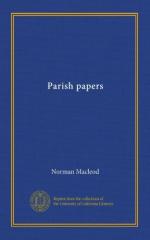(c.) Beyond the inner circle of His friends in Bethany and His more immediate followers, there was the multitude of poor, ignorant, fanatical, and unbelieving Jews—the wandering sheep, many of whom, had to be gathered into the fold of this the Good Shepherd. Jesus had their interests also at heart, as is evident from His prayer subsequently at the tomb of Lazarus: “Because of the people which stand by I said it, that they may believe that thou hast sent me.”
(d.) Nor must we, in contemplating the many objects of love which occupied the thoughts of the Saviour, forget how intimately connected the raising of Lazarus was with His own death. That last great miracle of Divine power and love—almost, if not His last on earth—was to mark the beginning of His own deepest humiliation and sorrow. The hatred of the Jews was at this time so intense, that Thomas was amazed that He should hazard a journey to a place so near Jerusalem as was Bethany. “The Jews of late sought to stone thee; and goest thou thither again?” And so dangerous did this journey seem, that while bravely resolving to accompany Him, Thomas said, “Let us also go, that we may die with him.” But this hatred was to be intensified by the display of Christ’s glory at the tomb of Lazarus; for we read that “from that day forth they took counsel to put Him to death.” The opening of the tomb to bring Lazarus forth was thus the opening of His own to descend thither as “crucified, dead, and buried.” The gratitude of Mary for having her brother restored was soon to be unconsciously expressed by her anointing his mighty Restorer for His own burial. No wonder that Jesus paused ere He took this last step which intervened between Himself and the death which should end His work and mission upon earth.
(e.) And, as including all these considerations and many more, His own glory as the Divine Son of God was involved in what was to take place at Bethany. And this, again, involved the destinies of the human race, and the good and comfort of the Church throughout coming ages. Whatever became of Martha or Mary or Lazarus,—though the sisters should weep out their little day of life, and though their brother’s sleep should be unbroken till the resurrection morning,—what was all this to the revealing of Jesus as the Saviour of men, and as the “resurrection and the life” of human bodies and of human souls? Inconceivably less in proportion than are the interests of one person to those of the whole universe! And thus you see that while those humble mourners, in the weakness of the flesh, and in their earthly short-sightedness, were thinking only of themselves, Jesus the Saviour of mankind had to think of many persons and of many things, so that every interest might be attended to, and the good of the whole kingdom of God be remembered, while not a hair on the head of Martha, Mary, or Lazarus was forgotten. Oh, blessed Saviour and glorious King! who can thus govern worlds and mould the ages of human history, while His ear is open to the prayers, and His thoughts occupied with the concerns, of the humblest mourners, as if they alone existed in the mighty universe of God!




